Updated: 01-Jul-2019
R.J. Isaacson worked in a railway company before designing his aviation engine in 1910, a 6-cylinder water-cooled 60 HP.
-It was installed in several Avro and Blackburn aircraft.
-In the illustration we see it on a B2 Flanders.

“Isaacson”
-It was a manufacturer of radial engines, fixed and rotary.
-Another well-known Isaacson engine is the 5-cylinder radial that gave 50 hp.
-Two rotaries were the 9 and 18-cylinder engines. The 9-cylinder gave 100 hp at 1,200 rpm.
-The 18-cylinder rotary delivered 200 hp at the same rpm.
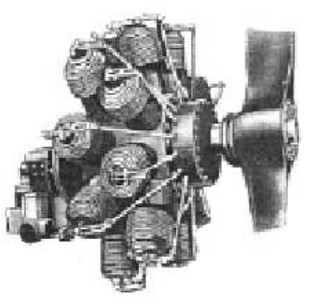
“Isaacson 18-cylinder”
-Within the range of fixed radial engines we have the air-cooled 7-cylinder that gave 50 hp. The 14-cylinder is a double version of the above mentioned 7-cylinder radial. This engine gives 100 hp.
-There was also a 7-cylinder Isaacson that gave 65 hp at 1,100 rpm. This was a fixed radial engine.
From Appendix 6: Designed by the Isaacson Engine Co. in Leeds. Year 1911.
-They are stationary radials (rotary radials predominated at the time).
-The seven-cylinder engine gave 50 Hp at 800 rpm propeller speed, because they used frontal concentric gears.

“Isaacson, 50 HP”
-The 100 hp was a double version of two coupled 7-cylinder engines forming a 14-cylinder, with reduction gear as well.
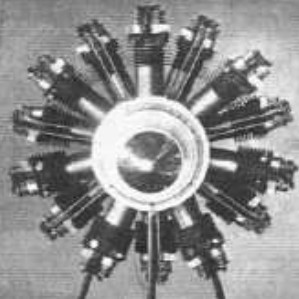
“14-cylinder Isaacson, 100 hp”
-The radial rotary engine shown below is from 1913. It gave about 60-65 hp.
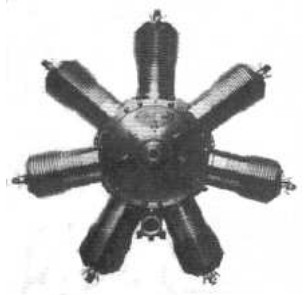
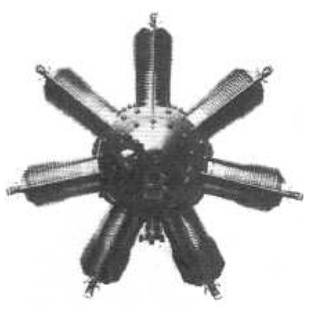
"The Isaacson rotary, 60-65 HP"
-Isaacson did the design and construction was done by Manning, Wardle and Co. at the Boyne Engine Works in Leeds.
From Appendix 7: We have a photograph of the Isaacson fixed radial engine from 1910, the 7-cylinder that gave 35/40 hp. It is taken from the side of the rocker controls.
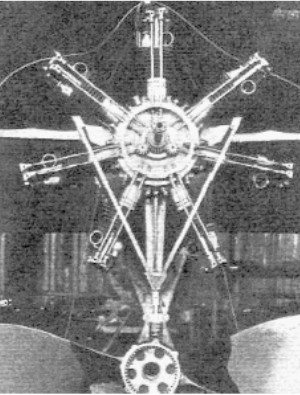
“Isaacson engine with open accessory box”
-It is clearly seen that the cam-plate is on the ground, next to the front landing gear.
-The plate's speed reduction is made by three satellites driving the central control gear wheel.
-As we see in the following illustration, the cam plate is at the front.
-In addition, the propeller shaft is eccentric and elevated because it has a superimposed gearbox.
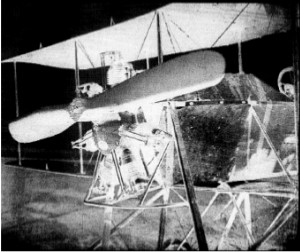
“Isaacson installed on a biplane” (PiP-fmr)
From Appendix 10: A 7-cylinder engine from this Leeds brand.

"Isaacson 7-cylinder fixed radial"
From Appendix 12: In an advertisement reproduced by Av.Ancestry we have more information about the characteristics of these engines.
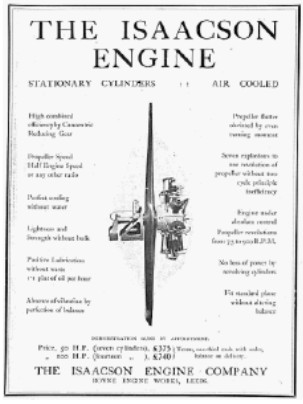
“The mentioned ad”
-Although they look like rotary radial engines, here we are told that the cylinders are stationary, at least the 7-cylinder, 50 hp engines and the 14-cylinder ones that gave 100 hp.
-Propeller speed half engine speed or any other ratio.
-Seven explosions to one revolution of propeller without two-cycle principle inefficiency -obviously-.
-The propeller can rotate between 75 and 900 rpm. Although it surprises the author that the propeller has an intermediate position.
Engines of ISAACSON
Model: 14 cyl. radial, 100 HP
Arquitecture: 14-cylinder Radial
Cooling: Air
Total Displacement:
Bore / Stroke:
Power: 100 HP
Weight:

"Isaacson 14-cylinder, 100 hp."
Model: 18 cyl. radial, 200 HP
Arquitecture: 18-cylinder Rotary
Cooling: Air
Total Displacement:
Bore / Stroke:
Power: 200 HP @ 1200 rpm
Weight:

"Isaacson 18-cylinder engine"
Model: 5 cyl, radial, 50 HP
Arquitecture: 5-cylinder Radial
Cooling:
Total Displacement:
Bore / Stroke:
Power: 50 HP
Weight:
Model: 6 cyl. radial, 60 HP (1910)
Arquitecture: 6-cylinder Radial
Cooling: Liquid
Total Displacement:
Bore / Stroke:
Power: 60 HP
Weight:
Model: 7 cyl. 35/40 HP
Arquitecture: Radial
Cooling:
Total Displacement:
Bore / Stroke:
Power: 40 HP
Weight:
Model: 7 cyl. radial, 50 HP
Arquitecture: 7-cylinder Radial
Cooling: Air
Total Displacement:
Bore / Stroke:
Power: 50 HP @ rpm
Weight:

"Isaacson 50 hp engine"
Model: 7 cyl. rotary, 60/65 HP
Arquitecture: 7-cylinder Rotary
Cooling: Air
Total Displacement:
Bore / Stroke:
Power: 65 HP @ 1100 rpm
Weight:

"The Isaacson 60-65 hp engine fig. 1"
Model: 9 cyl. radial, 100 HP
Arquitecture: 9-cylinder Rotary
Cooling: Air
Total Displacement:
Bore / Stroke:
Power: 100 HP @ 1200 rpm
Weight:


